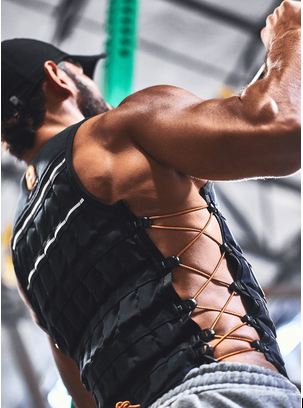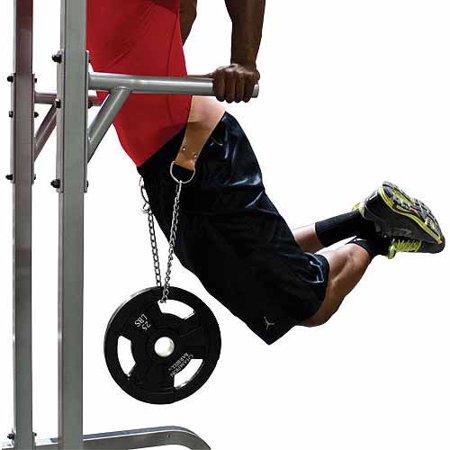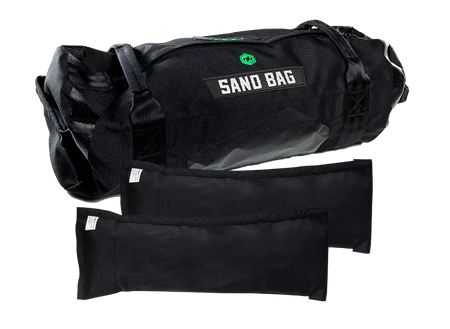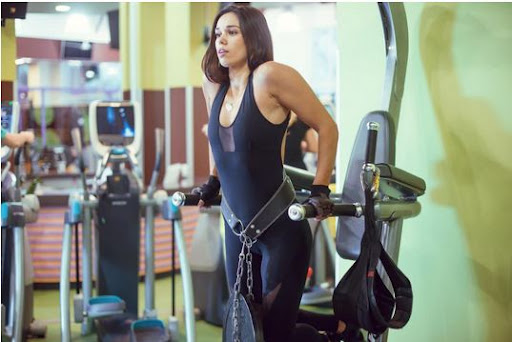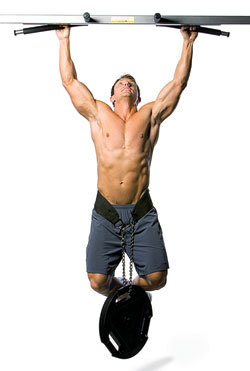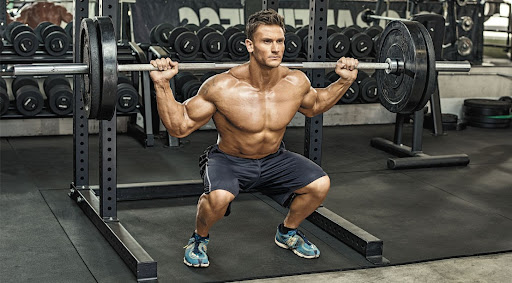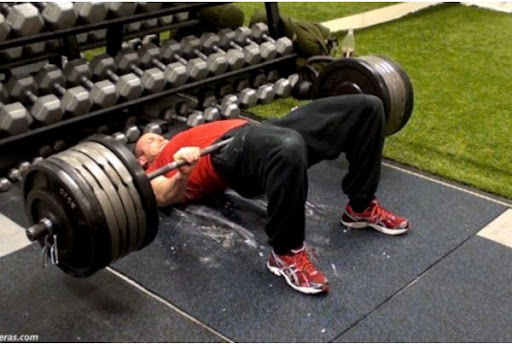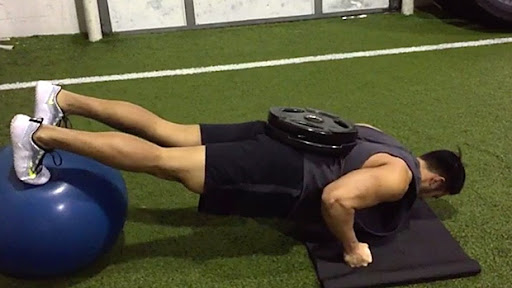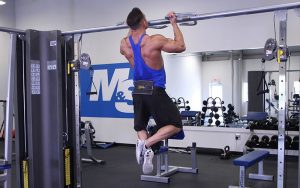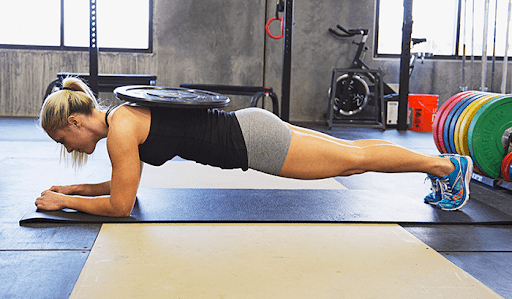There’s a reason why weighted calisthenics is making a comeback at the gym. It offers so many benefits, and it doesn’t require any fancy equipment!
But for building absolute strength and muscle, weighted calisthenics is an absolute beast of an approach you need to try!
In this blog post, we’ll talk about:
- 🧐What makes weighted calisthenics unique
- 🧐What equipment is needed
- 🧐How to use them for ultimate strength gains.
We’ve all seen those monstrous individuals doing pull-ups or dips with huge weights strapped to them.
They’re not doing it to claim their territory and declare to the world that their alpha’s.
No! They do it for their gains: building strength and muscle as well.
Build incredible strength through weighted calisthenics!
So what is weighted calisthenics?💯
Weighted calisthenics is basically incorporating weights in your bodyweight exercises.
Your resistance in calisthenics is just your entire body weight. Once you get strong enough, your body weight will not be challenging enough for your strength training; please, welcome the weights.
The weights will provide you, well… extra weight, so that your exercises will be much more difficult to execute. This is increasing intensity which exhibits the principle of progressive overload (More of this later).
You’ll be using some equipment for this type of training. No worries. These pieces of equipment are fairly cheap, accessible and nothing fancy. There are varieties of weights you can choose from.
Here is the list to choose from:
- Weighted vests
- Ankle weights
- Weight bag
- Dip Belt or weight belts
- Weight plates
- Dumbbells
I personally enjoy using the dip/weight belt because I can easily adjust the weight. I needed by adding or removing the plates. It’s just going to be slightly pricey-er than the other choices but, for me, the benefits outweigh the cost.
It can be integrated into many exercises such as weighted chin-ups, weighted muscle-ups, weighted plank, weight dips, and more. Add that you’ll look badass doing your dips with 2 huge plates strapped to you.
Also, when training with weighted calisthenics, be sure your pull-up bar and dip station are sturdy enough to hold you plus the additional weight you’ll be adding. Be safe when training with weights!
Why would you want to consider weighted🏋🏼 calisthenics?
Other than looking like a beast in the gym, weighted calisthenics helps you break your strength and muscle-building plateaus.
Once you have reached the maximum repetitions per set for optimal strength gain and muscle growth, bodyweight exercises will no longer help in maximal strength development nor be efficient in building muscle. Adding strength will not be enough with just your body weight.
This is when you should start weighted calisthenics.
🏆Benefits of weighted calisthenics
Primarily, if you want to build more strength, weighted calisthenics is your key. When you adjust your rep ranges and sets, you could also make weighted calisthenics build muscle.
If you would also like to monitor your strength progress, weighted calisthenics offer a much more objective format. Simply by adding weights, you’ll know you’re getting stronger.
Contrary to the bodyweight counterpart where adding more reps might indicate endurance rather than strength at some point.
Through weighted calisthenics, you’ll also still work on your favorite workout exercises only much harder. This means that compound exercises are still used; hence, more strength and muscle gains!
You will still be working with the basic movements and upper body exercises with the main exception of more resistance.
⚡️ Cons of Weighted Calisthenics
There are only a few cons!
- You’re going to spend a bit of money
- Prone to “ego lifting”
⚡️ A bit more expenditure
If you want to train weighted calisthenics in your own home, you’ll have to buy some very accessible equipment. This doesn’t mean you’ll have to shell out a lot of money. Weighted calisthenics equipment is very affordable and easy to find. Just compared to bodyweight calisthenics, you’ll have to spend some to get some.
Read more: The Ultimate Guide to Calisthenics Equipment and Cheap Alternatives
⚡️ Prone to “ego lifting“
Similar to the “ego lifters” in the gym, weighted calisthenics exercises are prone to this horrible type of workout. Ego lifting is when you’re using too much weight just to show you can. This is when you’re breaking form and probably going to get injured.
Don’t be an ego lifter!
You’ll only hurt yourself.
😲Who should do weighted calisthenics?
Weighted calisthenics is for people building more strength and bodyweight training alone is no longer efficient in helping towards a specific goal.
This is not for beginners. Those who still benefit from bodyweight basics, stick to it. Maximize your gains from the basics similar to this Beginner workout before moving on to weighted calisthenics.
This is for intermediate to advanced athletes that have mastered the fundamentals.
🤔So when should you start training with weighted calisthenics?
If you feel like you’re not getting stronger anymore by doing basic movements, you should move on.
There’s no point in busting out 30 to 100 to X number of push-ups, pull-ups, and dips to get stronger.
This will only make you last longer (Endurance) doing push-ups but not stronger (when you can lift heavier weights).
How exactly does weighted calisthenics help you get stronger?😱
Calisthenics is an awesome way to build muscle and strength, but there would be a point where you’ll hit a wall in your training. No matter what you do, you’re no longer gaining strength and more muscle mass.
You’ve probably hit a plateau because of either of the following:
- 🔎 Lack of variety – doing the same routine, reps, sets, and exercises over and over again
- 🔎 Mastered your basics – your basic bodyweight movement patterns are too easy for you!
- 🔎 Not doing a program intended for your skill level – your program is too difficult or too easy for you. Read in this article why not having a personalized workout will not work for you: Why Beginner/Intermediate/Advanced is hurting your gains
So how do we solve this issue?
🏆Progressive overload through weighted calisthenics
You’re probably familiar with the term progressive overload. This principle basically states that you need to make your muscles work harder in order to reap the gains you are looking for. You can achieve progressive overload through the following:
⭐️Increasing Intensity
If you’ve mastered you’re push-ups, dips, pull-ups, the basic, and can rack up a number of reps in number of sets, it’s time for you to move to a weighted calisthenics or other progressions.
⭐️Increase Volume
This is done by increasing your number of reps or sets. If you’re still gaining from this principle, you should maximize your gains here before increasing your intensity. This will allow you to progress safely.
⭐️Increase Frequency
This means adding another session within the week. You should also do this principle first before increasing your intensity.
⭐️Increasing Tension
You can increase tension by changing the timing in each repetition you do. For example in a push-up, you can move down for 2 counts, pause at the bottom, then push upwards for another 2 counts.
🎯Key points in your progressive principle
You don’t want to overdo it. Change one factor one at a time but increase your intensity last. Trust in your program and over time, you’ll get the gains you’ve trained for.
And for today, we’ll focus only on increasing our intensity by adding more weights.
2 Types of Strength training🤛
There are two types of routine if you want to gain strength and more muscle. 1 is by using advanced progressions and the other one is with weighted calisthenics. For today, we’ll focus on the latter. Weighted calisthenics proves also to be easier to progress with compared to the full-on bodyweight training counterpart.
🤜The key component in building strength is high intensity.
While hypertrophy training, moderate intensity, and high volume, still provides excellent strength gains for your goal of being strong as the Hulk, training with higher intensity and low volume is optimal if strength is the end game you’ve wanted.
Let’s say you could easily do 25 pull-ups, wear enough weight so you drop down into the 3-8 rep range. Actual rep range which is most effective for each individual varies to test out what you can do and what gives you the most results. Just stick near to this rep range. You could actually do just 3 reps or you could bust out 12. You have to try it to find out.
🤜This workout prepares your strength aspect for advanced progressions.
Gains from weighted calisthenics would carry over to the harder skills in calisthenics, but it does not necessarily teach you those gravity-defying skills.
You still need to train the proper progression for muscle-ups for example. You can’t just train pull-ups and dips with weights and expect yourself to do the skill in the training session.
Hey, but at least you’ll get the strength aspect down. You’ll just need to “memorize” the skill aspect of the movement afterward.
☝️Muscle mass will soon follow while building strength.
In order for your body to gain strength, muscles need to adapt in size as well. Strength is proportional to muscle size (Akagi et al., 2009). Your body adapts to the stress you exert on it. It responds by hypertrophy, which allows an increase of your muscle size, and neural adaptation, this enhances the nervous system’s signals to produce more power for the muscles.
There is also a mix of hypertrophy rep ranges you’ll notice in the workout program to provide variety. This will also provide you the best of both worlds! Gain massive strength and muscle size!
🏋🏼WEIGHTED CALISTHENICS WORKOUT ROUTINES
💥1 for the intermediate and 1 for the advanced.
We’ll be leaving out the beginners for now because you need to master your bodyweight basics first. There are also more progressions for beginners to benefit from rather than jumping to weighted calisthenics straight ahead.
If you’re an intermediate or an advanced, please be humble and listen to your body. Don’t go using the heaviest weights you can find then attempting an exercise. You’ll see yourself immediately in the hospital after your training.
💥Both routines will incorporate the same exercises.
The routines will differ though in terms of the format.
Start out slow and follow the basic rules of the workout. Remind yourself of the golden rules of training at the start of your workout.
Level: Intermediate
Time: 60 minutes
Goal: Strength Training
The workout will be done per station: meaning you have to finish the sets of each exercise before moving to the next exercise. This way, you’ll have more time to rest between each muscle group. But since you’ll be training with more rest periods, your training duration will be longer. The given rest periods allow your body to recover to maintain the same intensity for the following set.
Remember to put on the weight that will give you a limited amount of repetitions per set.
⚡️Workout for the Intermediate:
| Move | Sets | Reps |
| Chest Dips | 2 | 6 |
| Push-ups | 2 | 8 |
| Squats | 3 | 12 |
| Hamstring Raises | 3 | 12 |
| Pull-ups | 3 | 6 |
| Chin-ups | 3 | 8 |
| Plank | 3 | 10s |
3-minute rest between each set and rest for 3 minutes for each exercise. Follow the order above.
Reminder, this is not a circuit.
Level: Advanced
Time: 45 minutes
Goal: Strength Training
This type of workout is for the advanced. It will wear the hell out of you. This fatigue will induce the gains you wanted. You still have to rest in between exercises so that you don’t fatigue too much and hinder your ability to bust out the same intensity for the succeeding exercise.
The circuit is designed very similarly to the concept of supersets. You can think that this circuit is an extended superset.
The exercises are arranged so that the counterpart (agonist-antagonist) of each muscle group is utilized after each exercise. This allows you to gain more volume for the routine and gets you better stimulation for that superhero strength you’ve been eyeing.
⚡️Workout for the Advanced:
| Move | Sets | Reps |
| Chest Dips | 1 | 6 |
| Pull-ups | 1 | 6 |
| Squats | 1 | 12 |
| Hamstring Raises | 1 | 12 |
| Push-ups | 1 | 8 |
| Chin-ups | 1 | 8 |
| Plank | 1 | 10s |
1-minute rest between each exercise and rest for 3 minutes for each round. Follow the order above.
This is a circuit.
How it’s done:
✔️Chest Dips
You could wear a belt with plates, a weighted vest or bag, or even ankle weights for this one. Just be mindful of your form because you’ll be pulling a lot more weight than usual. Find a stool to assist yourself get up on the dip station.
✔️Pull-ups
You are going to use the same equipment used in chest dips. As usual, do everything in proper form. Don’t go half-repping or sticking your neck out just to reach the top of the movement. Find the amount of weight you’re going to be comfortable with and start slowly. Like for every exercise, we want to train safely rather than risking getting nasty injuries that will break us in half. Remember that you’ll be dealing with extra weight now. Be extra careful.
✔️Squats
You can use a weighted vest/bag but I think that squats are best done with barbells. Yes, you heard me: Barbells as in you’re going to do regular weight-lifting technique squats. It will allow you to squat with the most weight possible while remaining safe. Do back squats with a similar form to the bodyweight squats, but of course with hands on the bar rather than putting it in front of you.
✔️Glute Bridge
Here you need the weight on your hips. Either place the weighted vest/bag on top of your hip or use a barbell. Do the basic form of glute/hamstring raises but use an explosive movement upwards then control the negative portion of the movement. I suggest not going too heavy to fully reach the top of the movement and you might be too tired from the squats since it’s a more taxing movement.
✔️Push-ups
Use a weighted vest or you could ask someone to put plates on your back. Do regular proper form push-ups. No cheating. Keep the elbows properly parallel to each other. You could also do the same concept from the previous exercise; controlled downward and powerful upward motion.
✔️Chin-ups
Time to work for the opposite muscle group again. Use a weighted vest or belt with plates which are better for the exercise. Similar to every exercise, proper form. No cheating. Gains, gains, gains everywhere. Keep contracting that biceps, please.
✔️Plank
To finish the round, let’s go to the core with weighted planks. Similar to the push-ups, use a weighted vest or ask someone to put plates or a weighted bag on your back. Maintain your proper form and breathe. It is going to be agonizing but the benefits will be worth every tormenting agony you experience from the exercise.
👊Try the workout and experience the sudden strength and muscle gains surging after your rest.
The routine is strength-building oriented, quite difficult, but very rewarding. Building strength also builds you lean muscles that everyone is trying to achieve.
Supplement your training to get a step closer to your desired skill, too! Once you shift to your bodyweight exercises again, you’ll also notice the exercises become lighter.
Build your massive strength through weighted calisthenics!
When was the last time you hit a plateau in your training and how did you overcome it?
Let us know in the comment section below.
✊To fully maximize your gains, get it personalised.
It’s quite problematic to know if you’re already an intermediate, advanced, or still a beginner. The best way to train is to adjust the routine to your exact level of strength and skill. How to do that? With The Movement Athlete, of course!
With The Movement Athlete, your weighted training routine will be designed based on you. Not too difficult that your form will be compromised. Not too easy that you’ll be basically wasting your time. Just challenging enough to get your gains and reach your Hulk-like strength gains down.
I dare you to give it a try!
Stay strong, friends! 💪

